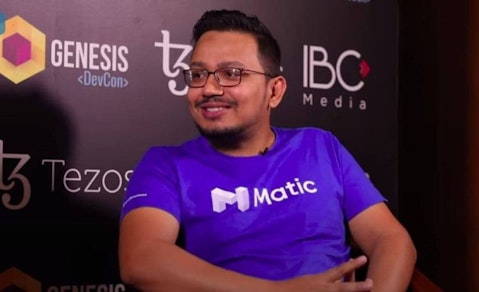The future of NFTs is very bright, and just like DeFi has become a sustainable sector in the Crypto market, NFTs will ultimately achieve product-market fit with greater accessibility and affordable transaction costs. According to data from DappRadar, the average NFT price peaked at $4334.21 on February 22, 2021, which was 40 times that of six months ago. The popularity of NFTs has exploded since the start of the year. NFTs can be art, music, collectibles, real estate, sports, fantasy football, games, almost anything. NFTs allow for the creation and sharing of art in a way that has never been done before.
As an emerging niche, NFTs have received a lot of traction. Essentially, NFTs have served as a tool to make art and other creative assets more discoverable and to truly reward artists and creators for their work. Tokenizing digital media turns it into a verifiably unique asset minted and stored on the blockchain. They are irreplaceable because each asset is unique, not equal, and interchangeable like cash. This transparency and scarcity brings tremendous opportunities to artists and creators and is also the best way to represent, send and trade unique assets.
The Who’s Who of NFTs
Twitter CEO, Jack Dorsey auctioned his first tweet as an NFT a few weeks ago, which finally sold for $2.9 million. Tesla CEO, Elon Musk also joined the NFT trend to sell a song about NFTs as an NFT.
The American rock band “Kings of Leon”, raised about $2M by selling their latest album as an NFT. The mainstream participation is evidence of the value NFTs can bring to fans, creators and artists.
These are very early days for NFT’s, and the market value is still quite small compared to the traditional arts and creator industries. But the industry is expanding rapidly, and the uniqueness and rarity of NFTs truly recognize the link between digital assets and tangible assets in the virtual world.
Just why are NFTs so attractive right now?
According to Sandeep Nailwal, co-founder of Polygon, a scaling framework for building Ethereum and interoperable blockchains, “The value of an NFT lies in its capability to value and trade digital art and other digital creations using a digital ledger. Factors like rareness, artistic capabilities, and the creator selling the work also weigh in considerably. NFTs represent a unique proof of authenticity behind the collection and work of a creator.

Sandeep Nailwal, Co-founder of Polygon
Sandeep Nailwal says,”We’re also starting to see NFTs being used in combination with DeFi to incentivize community engagement and participation. There are also many interesting use cases of NFTs being used to bridge the gap between traditional and Decentralized Finance.”
He points out that we should “also pay attention to the liquidity of NFT, because the value of NFT is very subjective, unlike traditional ERC20 prices which are derived from centralized or decentralized liquidity pools. New applications that allow for NFT Lending are working on establishing a floor value for NFTs through aggregation features combining unique NFTs that belong to the same type.”
Because of the sharp rise in the development of the NFT market, this has “resulted in the need for a robust infrastructure that can support NFT Minting and Trading, which is computationally expensive for most Blockchains.”
“Moreover, climate change activists, environmentalists, and eco-conscious artists are questioning the impact of the NFT buzz on the climate as each and every NFT that is minted is essentially a transaction that needs to be mined using an energy-intensive Proof of Work mechanism on the blockchain.”
How Does Polygon Support This Ecosystem?
This is where Polygon comes in with their own Polygon Layer 2 Chains, which have seen widespread adoption, currently utilized in over 130 Dapps, around 14M transactions, and with approximately 270K unique users.
Polygon strongly supports the NFT wave, with some of the top NFT projects deploying on Polygon, including Aavegotchi, Cometh, Neon District, Megacryptopolis, ZedRun, Chain Guardians, Decentral Games, Battle Racers, Doki Doki, MyCryptoHeroes, and many more brilliant projects.
Sandeep Nailwal says “This has resulted in the need for a robust NFT infrastructure that can support high growth games and projects. NFT marketplaces like Opensea and Arkane have built seamless NFT trading experiences thanks to Polygon’s high speed, low-cost transactions.”
There’s no doubt that Polygon has been busy. Polygon Dapps are also grabbing mainstream attention, with Jack Dorsey and Elon Musk auctioning their tweets as NFTs on the Polygon-powered platform, Cent. NFTs launched by Logan Paul, a famous boxer with around 5M followers on Twitter are being sold on the Arkane Marketplace, which is live on Polygon.
Mark Cuban has also used the Polygon-powered NFT Tweet minter, Tokenized Tweets and Logan Paul has recently launched NFT’s on Arkane Marketplace.
Aavegotchi is another great example of an NFT + DeFi + DAO experience on Polygon. They sold out 10,000 portals for their Defi + NFT game, raising more than 5.5M$ for their DAO treasury, player rewards pool, and Pixelcraft Studios. Aavegotchi also recently collaborated with famous rapper Lil Pump for in-game items.
Sandeep Nailwal says “We are working with Fortune-500 Enterprises to use NFTs in the insurance sector and simplify the business process for large enterprises. These are a few of the ways we have supported the NFT ecosystem so far and we look forward to continually growing and expanding our offerings to support NFT projects, developers, and the creator ecosystem.”
How does Polygon differ from blockchain interoperability projects like Polkadot and Cosmos?
Polygon effectively transforms Ethereum into a full-fledged multi-chain system (aka Internet of Blockchains). This multi-chain system is akin to other ones such as Polkadot, Cosmos, Avalanche, etc, but with at least three major upsides:
- It is able to fully benefit from Ethereum’s network effects.
- It is inherently more secure.
- It is more open and powerful.
Polygon will support other major Layer 2 solutions such as Optimistic Rollups, zkRollups, Validium, etc, thus basically becoming a one-of-a-kind “Layer 2 aggregator”.
What’s the future for a project like Polygon?
Sandeep Nailwal emphasizes the necessity to “enable greater accessibility to NFTs, and not just limit them to the crypto world. We also want to alleviate the concerns with the environmental friendliness of NFTs, and our Proof-of-Stake consensus mechanism in the Polygon commit chain reduces the environmental impact of minting and trading of NFTs by almost 99%. “
“We also want to support artists, creators, and the best projects that enable these experiences. Through our developer-first approach, we want to support and grow the ecosystem with funding, grants, and all kinds of marketing support.”
Disclosure: No positions. Insider Monkey doesn’t recommend purchase/sale of any securities. Please get in touch with a financial professional before making any financial decisions. You understand that Insider Monkey doesn’t accept any responsibility and you will be using the information presented here at your own risk.




